Nestled within the heart of Australia’s island state, Tasmania lies a region that beckons with its captivating landscapes, vibrant culture, and an array of unique experiences. Welcome to Northern Tasmania, a destination that embodies the best of what this picturesque island has to offer.
From rugged wilderness to charming towns, from culinary delights to outdoor adventures, this guide is your key to unlocking the treasures of Northern Tasmania. Whether you’re a curious traveller, an avid explorer, or simply seeking a relaxing escape in a beautiful part of the world, join us as we explore everything you’ve ever wanted to know about visiting the enchanting region of Northern Tasmania.
What Towns and Regions Comprise Northern Tasmania?
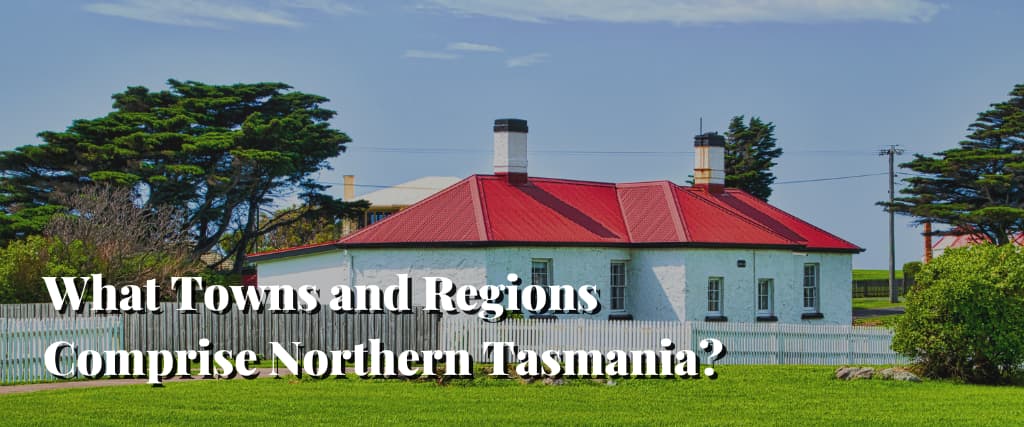
Northern Tasmania encompasses diverse towns, cities and regions that collectively contribute to its unique charm and character.
Here are some of the key towns and areas that make up Northern Tasmania:
Launceston: As the largest city in Northern Tasmania, Launceston is a hub of culture, history and natural beauty. It offers a mix of historic architecture, modern amenities and access to the picturesque Cataract Gorge.
Tamar Valley: This region is known for its fertile landscapes and scenic beauty. It’s home to numerous vineyards, wineries and orchards, making it a paradise for food and wine lovers.
Devonport: As one of the main gateways to Tasmania, Devonport offers a charming coastal setting. The city is known for its maritime history, lovely beaches and the Spirit of Tasmania ferry terminal.
Burnie: With a strong focus on arts and culture, Burnie is a lovely coastal city known for its vibrant arts scene, industrial heritage and beautiful beaches. You’ll find a terrific selection of cafes and restaurants here too.
Ulverstone: This laid-back coastal town boasts sandy beaches, local markets and a welcoming atmosphere, making it a popular spot for those wanting to relax by the sea.
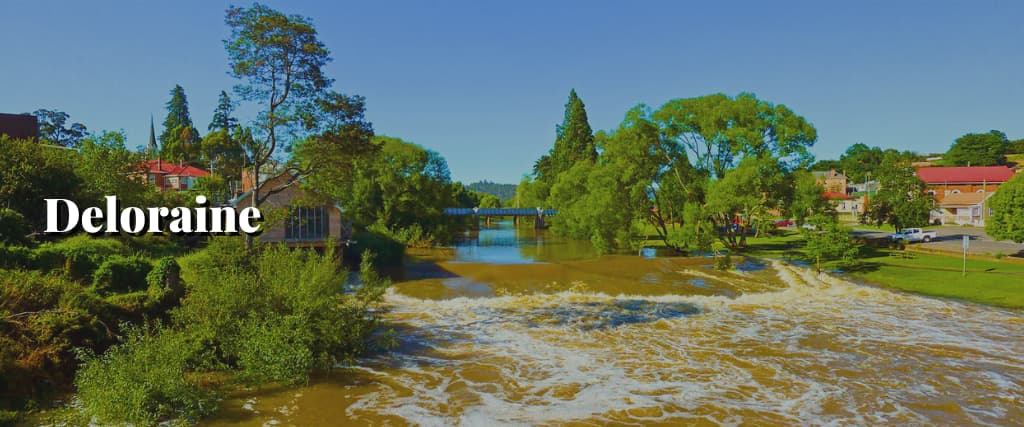
Deloraine: Nestled along the banks of the Meander River, Deloraine exudes a picturesque charm. The town is famous for its arts and crafts community and hosts the annual Tasmanian Craft Fair in November.
George Town: As one of Australia’s oldest settlements, George Town offers a glimpse into colonial history. Its historic sites, including Low Head Pilot Station, draw visitors interested in Tasmania’s maritime heritage.
Beaconsfield: Known for its gold mining history, Beaconsfield gained international attention in 2006 when miners were rescued from a collapsed mine. The Beaconsfield Mine & Heritage Centre is a popular attraction that tells this story.
Bridport: Situated on the shores of Anderson Bay, Bridport is renowned for its stunning beaches and golf courses, most notably the beautiful Barnbougle Dunes and Lost Farm golf course.
Scottsdale: This town is the gateway to the Northeast, with lush forests and rolling hills surrounding it. Scottsdale is a great starting point for exploring nearby natural attractions.
Lilydale: Nestled in the foothills of the North East Highlands, Lilydale is known for its scenic beauty, vineyards and access to the Lilydale Falls walking track. It is a fabulous place to immerse yourself in nature.
West Tamar: This picturesque region along the Tamar River offers a blend of vineyards, farmlands and historic towns, making it perfect for exploring at a leisurely pace.
North East Highlands: This rugged and remote area is a paradise for nature lovers, featuring the stunning Ben Lomond National Park and offering hiking, skiing and wildlife spotting opportunities.
These are just a few of the towns and regions that collectively create the rich tapestry of Northern Tasmania. Each place has a unique appeal, contributing to the overall allure of this captivating destination.
Best Time to Visit Northern Tasmania?
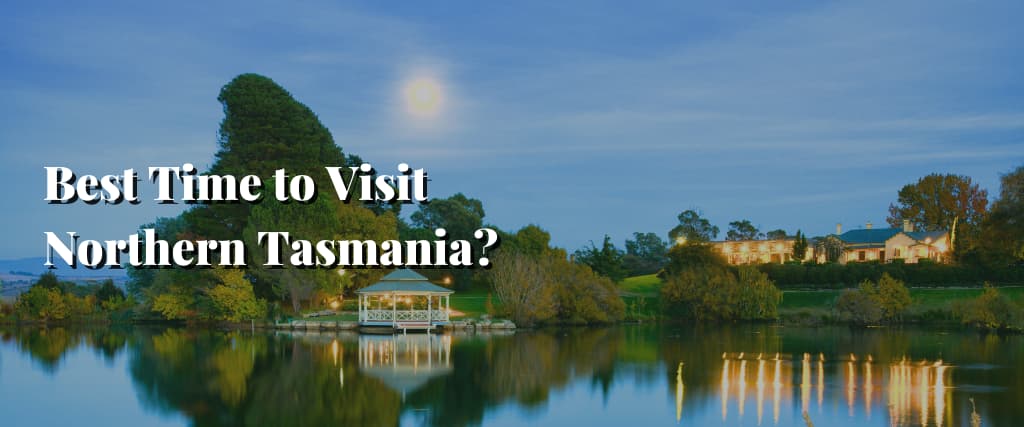
Like the rest of the state, Northern Tasmania experiences four distinct seasons, each offering its own set of attractions and activities. So the best time to visit the region largely depends on your preferences and the experiences you seek.
Many travel experts consider spring and autumn to be optimal months to go to Northern Tasmania. Spring (September to November) is a delightful time to visit as the weather starts to warm up and the landscapes come alive with blooming flowers and lush vegetation. This is an excellent time for outdoor activities like hiking, cycling, and exploring the region’s natural beauty. The Tamar Valley’s vineyards are particularly scenic during this time, and you can witness the grapevines awakening from their winter slumber. The weather is generally mild, making it ideal for enjoying the outdoors without the summer crowds.
In a similar vein, autumn (March to May) is known for its crisp temperatures, clear skies, and stunning foliage. The landscapes are painted in shades of red, orange, and gold, making it a fantastic time for photography and scenic drives. The cooler weather is suitable for outdoor activities like hiking and exploring historical sites without the heat of summer. The Tamar Valley’s vineyards continue to be a highlight as the grape harvest takes place, and you can enjoy a quieter and more relaxed atmosphere compared to the peak summer season.
As you would expect, due to the fact that it’s the school holidays, the summer months of December to February represent the peak tourist season. Blessed with warm temperatures and long daylight hours, it’s an excellent time for beachgoers and water activities. Visitors can explore the coastal areas, enjoy festivals, and participate in various outdoor events. The Tamar Valley’s wineries are bustling with activity, and the overall festive atmosphere makes it a great time for socialising and exploring local markets. However, popular attractions might be more crowded during this period, and accommodation prices will be more expensive.
The winter months of June to August are quieter in Northern Tasmania, making it ideal for travellers seeking a peaceful and more intimate experience. While the weather can be chilly, it’s a great time for indoor activities like visiting museums and art galleries and enjoying the region’s culinary offerings. If you’re a fan of winter sports, the North East Highlands offer skiing and snowboarding opportunities in places like Ben Lomond National Park. Additionally, winter is an excellent time for wildlife spotting, as animals become more active in search of food.
How to get to Northern Tasmania?
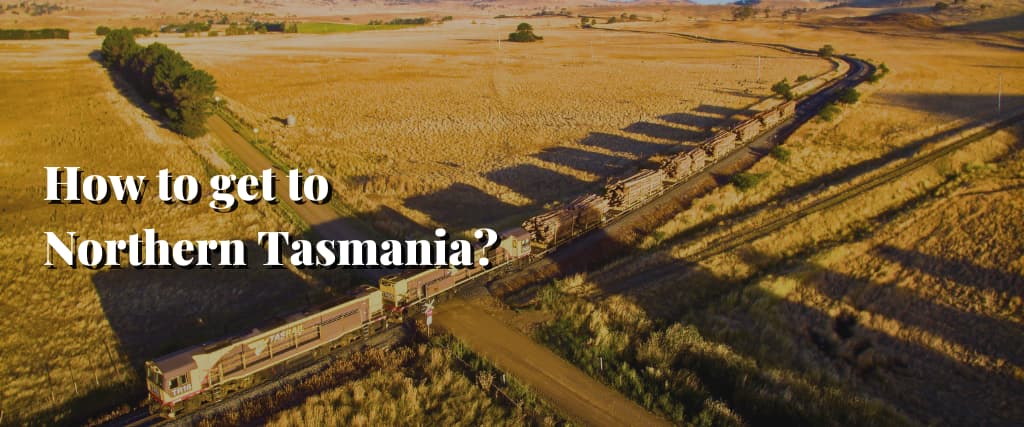
Whether you’re travelling domestically within Australia or internationally, getting to Northern Tasmania is relatively straightforward. The region’s main entry points are air travel, ferry services, and road trips which you can utilise in the following ways:
By Air
Launceston Airport (LST) is the primary gateway to Northern Tasmania if you’re flying domestically. It offers both domestic and limited international flights. You can fly directly to Launceston from major Australian cities like Melbourne, Sydney, and Brisbane.
While smaller, Devonport Airport (DPO) also serves the region, with flights connecting from Melbourne. Keep in mind that flight availability might vary, so it’s advisable to check schedules and book in advance.
Ferry Services
If you’re travelling from mainland Australia, you can take the Spirit of Tasmania ferry service. This iconic overnight ferry departs from Melbourne (Port Melbourne) and arrives in Devonport, Northern Tasmania. The journey offers a unique way to cross the Bass Strait and enjoy onboard amenities, including dining and entertainment options.
By Road
For those already in Tasmania wanting to explore Northern Tasmania by road, you can drive from Hobart. The journey takes around two to three hours, depending on your route and stops along the way.
Should you be travelling from other parts of Tasmania or even from other Australian states, you can reach Northern Tasmania via well-maintained highways and roads. Keep in mind that some routes might include winding roads, so plan your journey accordingly and drive carefully.
If you don’t have your own car, you can rent a vehicle from several operators, including the likes of Avis, Hertz and Budget, at all major airports and most cities.
Public Transportation
Several bus and coach services operate between major Tasmanian cities and
towns, including those in Northern Tasmania. This can be a convenient and cost-effective option for travellers who prefer not to drive.
Before you travel, make sure to check the most up-to-date information about transportation options, flight schedules and ferry services. It’s also recommended to book your transportation and accommodations in advance, especially during peak travel seasons, to ensure your visit to Northern Tasmania is smooth, seamless and enjoyable.
Things To See and Do in Northern Tasmania
Northern Tasmania offers a wide range of activities and attractions that cater to the varied interest of tourists and travellers. If you’re a nature lover, a history buff, a foodie, or a thrill seeker, there’s something for everyone to enjoy in this beautiful part of the Apple Isle.
Here are some of the top things to see and do in Northern Tasmania:
Explore Cradle Mountain-Lake St Clair National Park
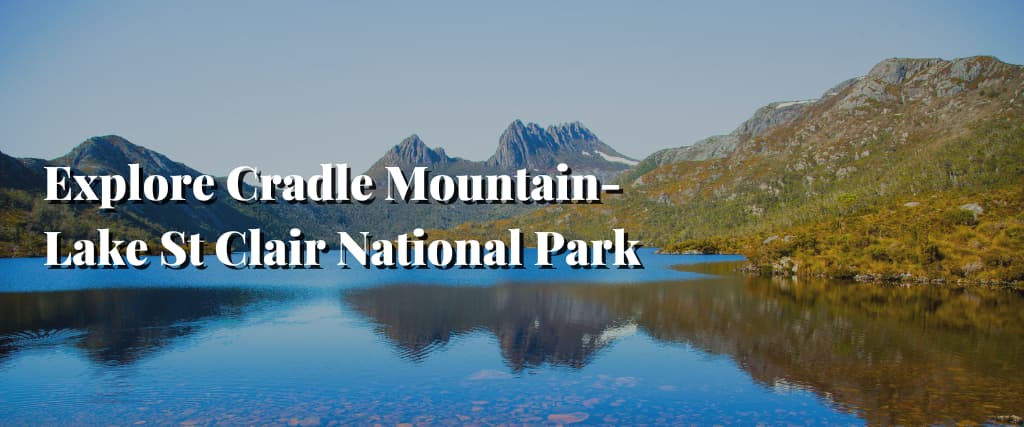
Immerse yourself in the breathtaking landscapes of this UNESCO-listed national park. Hike the iconic Overland Track, take in panoramic views from Cradle Mountain and explore pristine alpine scenery, ancient rainforests and glacial lakes.
Visit Cataract Gorge, Launceston
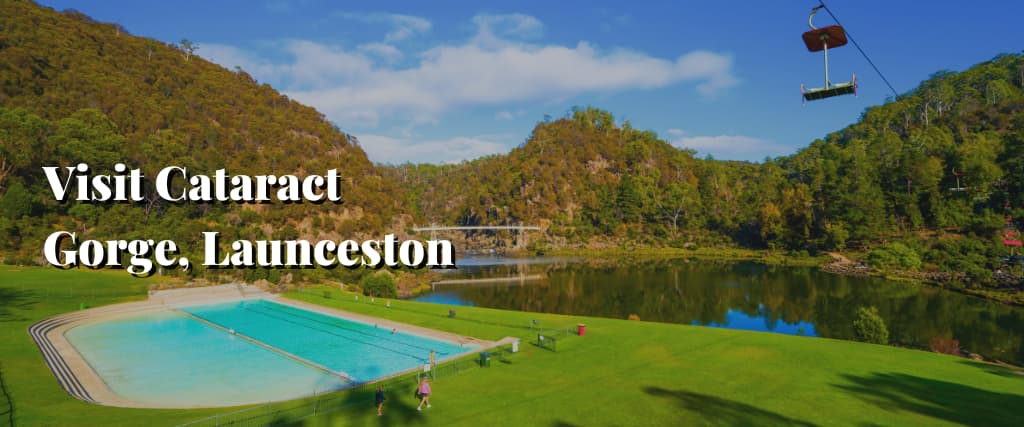
Discover the natural beauty of Cataract Gorge, a stunning reserve located just minutes from Launceston’s city centre. Enjoy walking trails, a chairlift ride and even a swimming pool in this picturesque gorge.
Indulge in Wine Tasting in the Tamar Valley
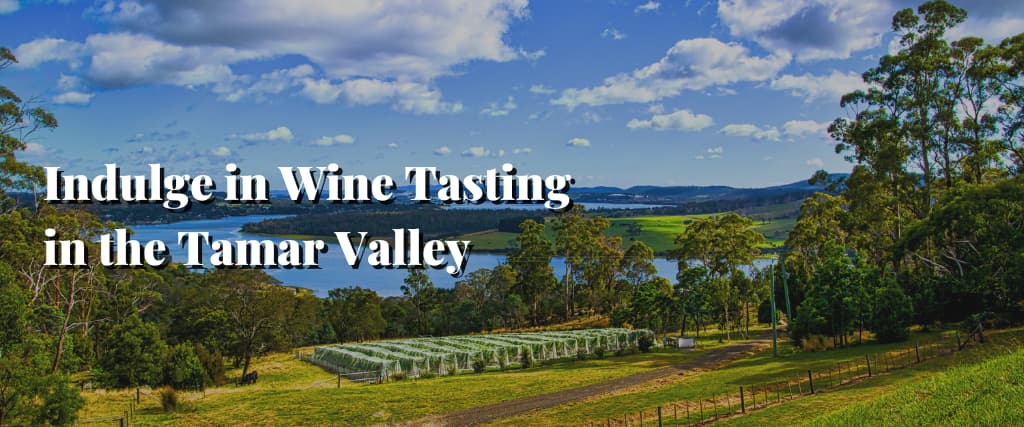
Explore the Tamar Valley’s vineyards and wineries, renowned for producing exceptional cool-climate wines. Embark on wine-tasting tours, visit cellar doors, savour local cuisine and enjoy picturesque views of the Tamar River.
Relax on the Bay of Fires Beaches
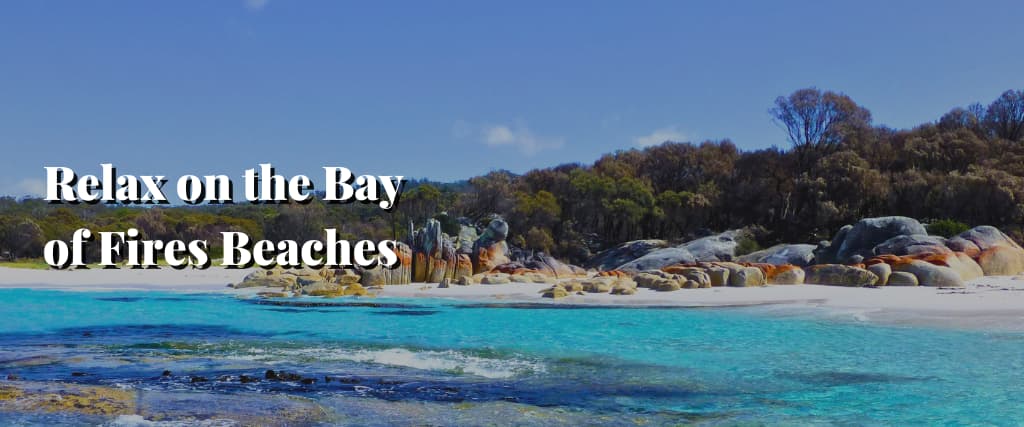
Discover the Bay of Fires, known for its unique orange-hued granite boulders, white sand beaches and crystal-clear waters. This coastal paradise is perfect for beachcombing, swimming and simply soaking in the stunning scenery.
Experience the Beaconsfield Mine & Heritage Centre
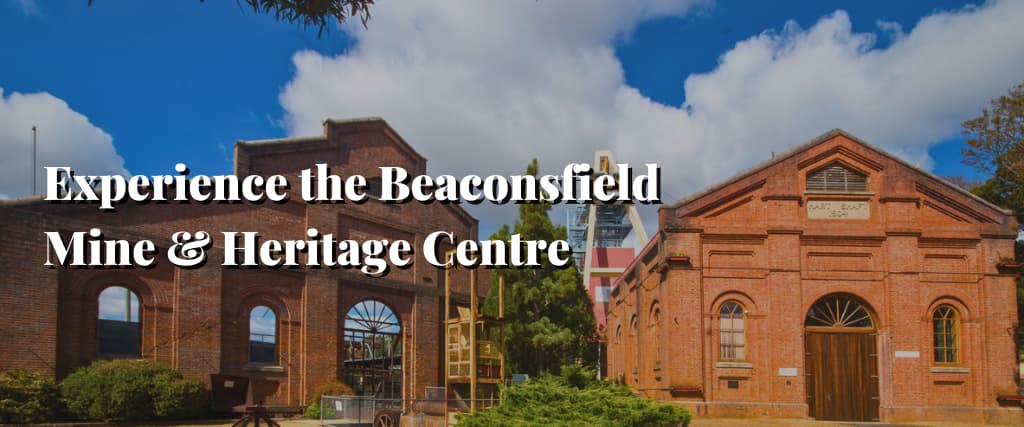
Learn about Tasmania’s gold mining history and the dramatic rescue of trapped miners in 2006 at the Beaconsfield Mine & Heritage Centre. Explore interactive exhibits and gain insight into the region’s
rich heritage.
Enjoy Arts and Culture in Launceston
Immerse yourself in Launceston’s cultural scene by visiting art galleries, attending live performances, and exploring the local arts and crafts scene. Don’t miss the Queen Victoria Museum and Art Gallery, a hub of historical and artistic exhibits.
Sample Local Cuisine and Produce
Northern Tasmania is a food lover’s paradise. Visit farmgate markets, taste fresh seafood, artisanal cheeses, and indulge in culinary experiences that showcase the region’s high-quality produce.
Explore the Blue Derby Mountain Bike Trails
Mountain biking enthusiasts will find their thrill on the Blue Derby Trails. These world-class mountain biking trails wind through beautiful forests and offer routes suitable for various skill levels.
Discover Low Head and its Maritime Heritage
Explore Low Head’s maritime history by visiting the Low Head Pilot Station and Maritime Museum. Learn about the area’s role in navigation and enjoy views of the iconic Low Head Lighthouse.
Experience the Wilderness of the North East Highlands
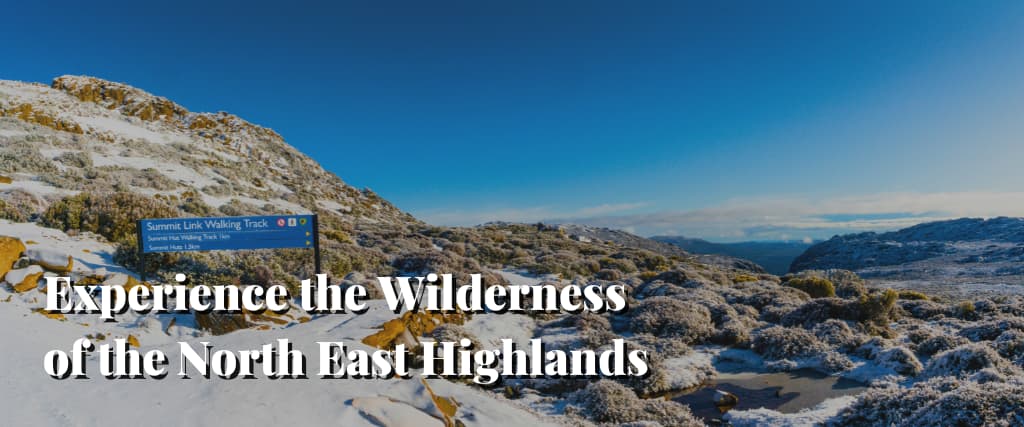
Adventure seekers can explore the rugged beauty of the North East Highlands. Hike in Ben Lomond National Park, go skiing or snowboarding in winter and marvel at the area’s pristine wilderness.
Attend Local Festivals and Events
Northern Tasmania hosts a variety of festivals and events throughout the year. There’s always something happening, from food and wine festivals to art exhibitions and cultural celebrations – its a great way to meet the locals!
Discover Local Wildlife
Keep an eye out for unique Tasmanian wildlife, including Tasmanian devils, wombats, wallabies and a diverse array of bird species. Visit wildlife parks and reserves to learn more about these fascinating creatures.
No matter what your interests are, Northern Tasmania offers an abundance of activities and experiences that will make your visit memorable and enjoyable.
Where to Stay in Northern Tasmania?
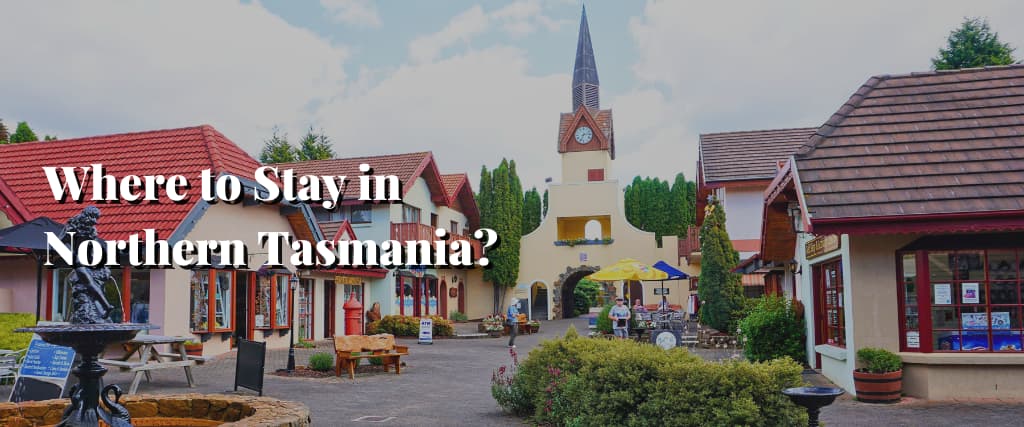
For those visiting Northern Tasmania, there are a variety of accommodation options to suit different preferences and budgets. From luxury resorts and quaint bed-and-breakfasts to cosy cabins and camping, there’s something for everyone.
Here are a few examples of accommodations in Northern Tasmania along with their features and proximity to major tourist attractions:
Peppers Silo Hotel (Launceston)
Features: This unique hotel is housed in converted grain silos, offering modern and luxurious accommodations. Enjoy stunning views of the Tamar River, on-site dining, and easy access to Launceston’s attractions.
Proximity to Attractions: Close to Cataract Gorge, Queen Victoria Museum and Art Gallery, and the city centre.
Tamar Valley Resort (Grindelwald)
Features: Set in a Swiss-inspired village, this resort offers self-contained accommodations, an 18-hole golf course, an indoor pool, and various recreational facilities.
Proximity to Attractions: Near Tamar Valley wineries, Barnbougle Dunes golf course, and Launceston.
The Charles Robbins Hotel (Deloraine)
Features: A boutique hotel with historic charm, comfortable rooms, and an on-site restaurant serving local cuisine.
Proximity to Attractions: Located in Deloraine, close to attractions like the Great Western Tiers Visitor Centre and Meander River.
Bridport Bay Inn (Bridport)
Features: This waterfront inn offers comfortable rooms, an on-site restaurant with ocean views, and easy access to Bridport’s beautiful beaches.
Proximity to Attractions: Steps away from Bridport’s beaches and near Barnbougle Dunes and Lost Farm golf courses.
The Cornwall Historic Hotel (Launceston)
Features: A heritage-listed hotel with elegant rooms, antique furnishings, and a central location in Launceston’s CBD.
Proximity to Attractions: Close to City Park, Cataract Gorge, and Launceston’s dining and shopping areas.
Beauty Point Waterfront Hotel (Beauty Point)
Features: Overlooking the Tamar River, this hotel offers comfortable accommodations, an on-site restaurant, and easy access to Seahorse World and Platypus House.
Proximity to Attractions: Near attractions focused on marine and aquatic life, such as Seahorse World and Platypus House.
Bridestowe Lavender Estate Cottages (Nabowla)
Features: Located on a lavender farm, these self-contained cottages provide a unique rural experience, surrounded by lavender fields.
Proximity to Attractions: Close to Bridestowe Lavender Estate and a short drive from Scottsdale.
Low Head Tourist Park (Low Head)
Features: Offering various types of accommodation, including cabins and camping sites, this park is near Low Head’s historical sites and lighthouse.
Proximity to Attractions: Close to Low Head Lighthouse, Low Head Pilot Station and George Town.
These are just a few examples of the diverse accommodation options available in Northern Tasmania. Depending on your preferences and the attractions you plan to visit, you can find lodging that suits your needs, whether you’re seeking luxury, historical charm, or a cosy retreat.
Where to Eat in Northern Tasmania?
Northern Tasmania is a haven for food lovers, offering a wide range of dining options that showcase the region’s fresh produce and culinary creativity. From fine dining establishments to cozy cafes, here are some examples of restaurants in different suburbs of Northern Tasmania along with their standout dishes:
1. Stillwater Restaurant (Launceston)
This award-winning restaurant offers modern Australian cuisine using local and seasonal ingredients. Enjoy views of the Tamar River in a historic setting.
Must-try dishes: Pan-roasted duck breast with beetroot, goat’s cheese, and hazelnuts.
2. Josef Chromy Wines (Relbia, near Launceston)
This winery restaurant pairs its wines with exquisite dishes, offering a refined dining experience amid picturesque vineyards.
Must-try dishes: Tasmanian ocean trout with pickled vegetables and dill.
3. Black Cow Bistro (Launceston)
Known for its high-quality beef and local produce, this steakhouse offers a hearty and memorable dining experience.
Must-try dishes: Grass-fed beef steak cooked to perfection, accompanied by a selection of sides and sauces.
4. Harvest Launceston Community Farmers’ Market (Launceston)
This vibrant farmers’ market is perfect for sampling a wide array of local delicacies in a lively atmosphere.
Must-try dishes: A variety of fresh and artisanal products from local vendors, including pastries, cheeses, and seasonal fruits.
5. Christmas Hills Raspberry Farm Café (Elizabeth Town)
Enjoy delightful sweet treats made from fresh raspberries grown on the farm while overlooking the lush countryside.
Must-try dishes: Decadent raspberry desserts like raspberry pancakes and chocolate brownies.
6. The Jaffle Bar (Launceston)
A cosy cafe that specializes in delicious and inventive jaffles, perfect for a quick and satisfying meal.
Must-try dishes: Gourmet jaffles (toasted sandwiches) with creative fillings, such as smoked salmon and cream cheese.
7. Bridestowe Lavender Estate Café (Nabowla)
Indulge in a unique culinary experience by trying various dishes infused with the fragrance of locally grown lavender.
Must-try dishes: Lavender-infused treats, including lavender scones and lavender ice cream.
8. Timbre Kitchen (Launceston)
This restaurant focuses on seasonal and sustainable produce, creating flavorful dishes that celebrate Tasmanian ingredients.
Must-try dishes: Locally sourced pork belly with apple and fennel slaw.
9. Bay of Fires Winery & Cellar Door (Pipers River)
Enjoy a relaxing afternoon overlooking the vineyards while savouring a selection of gourmet treats.
Must-try dishes: Platters featuring local cheeses, charcuterie, and fresh bread, complemented by the winery’s wines.
10. The Point Cafe (George Town)
A casual seaside cafe offering stunning waterfront views and a variety of seafood dishes.
Must-try dishes: Fresh seafood options, including Tasmanian oysters and fish and chips.
These examples showcase the diverse dining scene in Northern Tasmania, where you can savour a wide range of culinary delights, from farm-to-table dishes to gourmet treats made with local ingredients.
Whether you enjoy seafood, love grilled meats, or are a fan of fine dining, the cafes, restaurants and eateries of Northern Tasmania has something to satisfy every palate.
Conclusion
Whilst Tasmania is a wonderful place to visit in general, you should devote some quality time to the island to explore its northern parts.
From Cradle Mountain’s rugged landscapes to the Tamar Valley’s picturesque vineyards, this enchanting region offers a diverse tapestry of attractions that cater to all interests.
As you explore the charming towns, indulge in gourmet delights, and immerse yourself in the region’s captivating history, you’ll understand why Northern Tasmania holds a special place in the hearts of locals and visitors. The unique blend of natural beauty, cultural heritage, and warm hospitality creates an atmosphere that lingers long after you’ve returned home.
So, whether you fancy hiking through pristine landscapes, sipping fine wines by the Tamar River, or simply taking in the breathtaking views, remember that Northern Tasmania has a treasure trove of experiences waiting to be discovered.
When navigating its diverse offerings, you’ll create memories that will forever link you to this captivating corner of the world.
